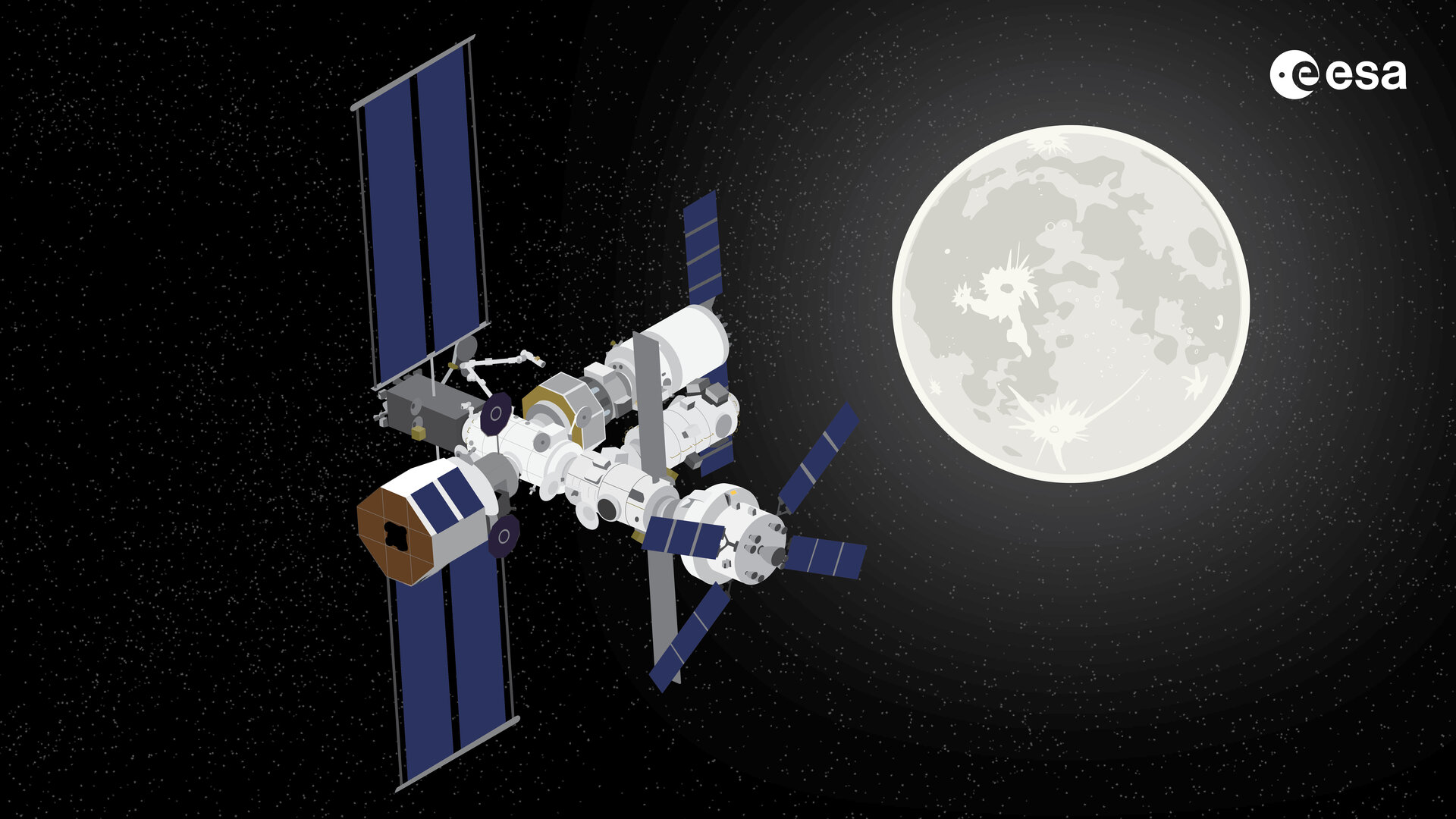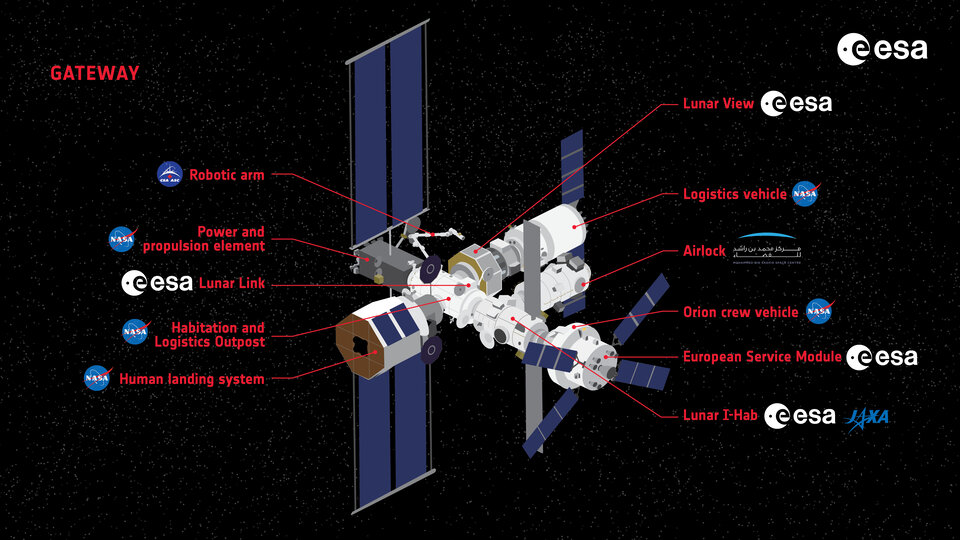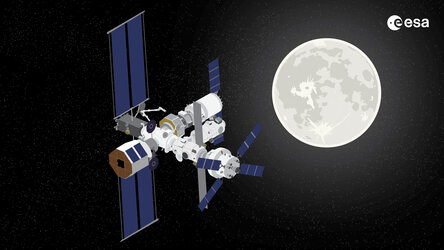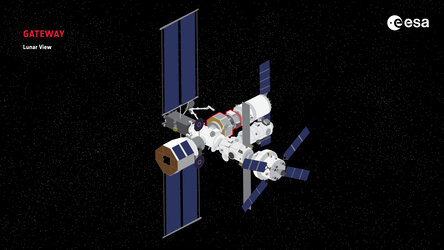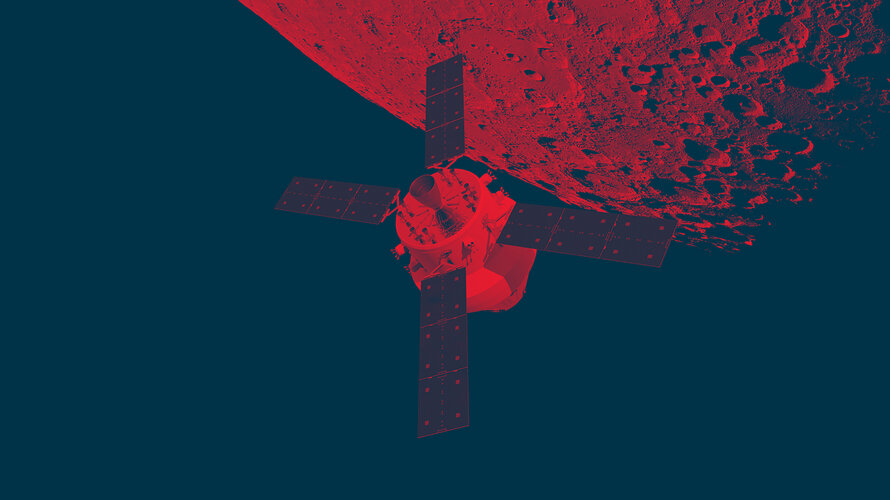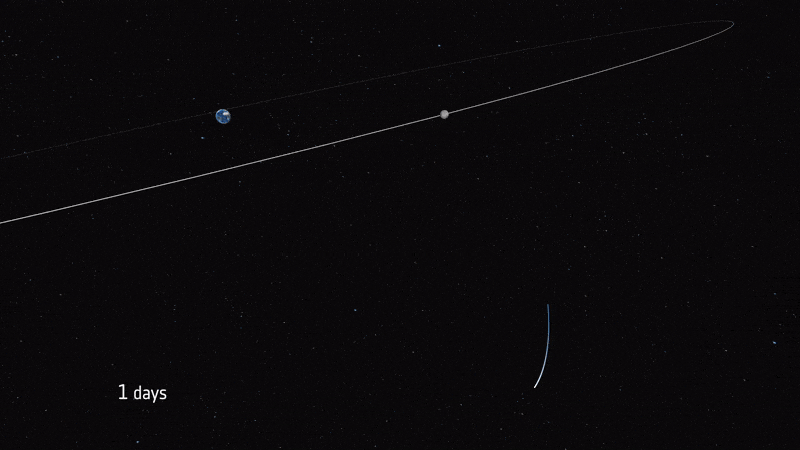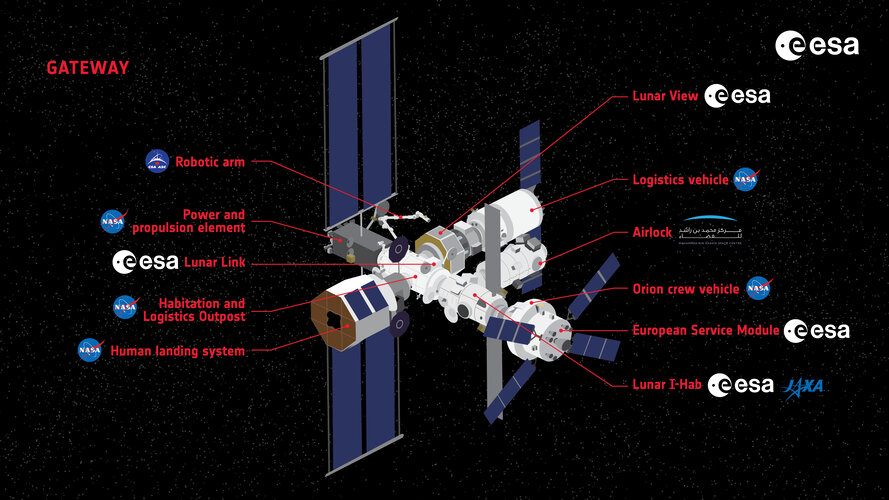Gateway
The lunar Gateway is to be the first international space station around the Moon and will support the most distant human space missions ever attempted, as part of the Artemis programme.
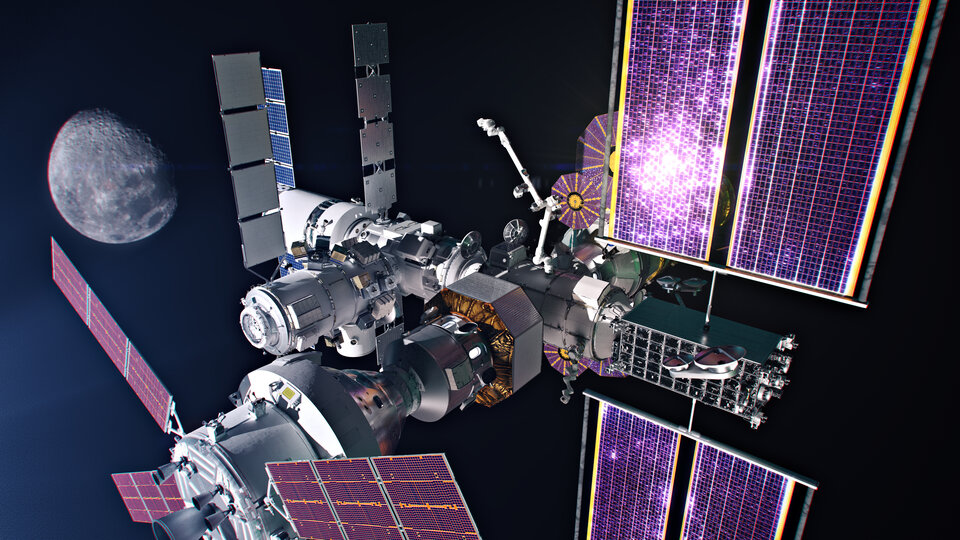
The lunar outpost is being assembled for operation around the Moon, providing a place to live and work in lunar orbit.
Whereas the International Space Station orbits Earth, the Gateway will orbit the Moon, acting as a base for scientific research of the deep space environment, a host for technology development and demonstration experiments, as well as a staging post supporting exploration missions to the lunar surface and beyond.
In addition to payloads that will fly to this new space station, ESA is contributing three key elements to the Gateway: Lunar I-Hab, Lunar View and Lunar Link. Together, these provide a habitable space for astronauts, refuelling, storage and telecommunication capabilities, and windows to view space and the Moon.
Fly me to the Moon
The Gateway will act as a base for scientific research, in an ideal position away from the interference of Earth’s gravity and magnetic field. Although the Gateway will be smaller than the International Space Station, with a length of around 20 metres compared to 50 metres, astronauts will be able to live and work in it for up to three months at a time. Most of the time, the Gateway will be orbiting the Moon without a crew onboard, and its orbit will be 1000 times further away from Earth than the International Space Station, meaning the Gateway station is being built to operate autonomously, for example by supporting robotic maintenance capabilities.

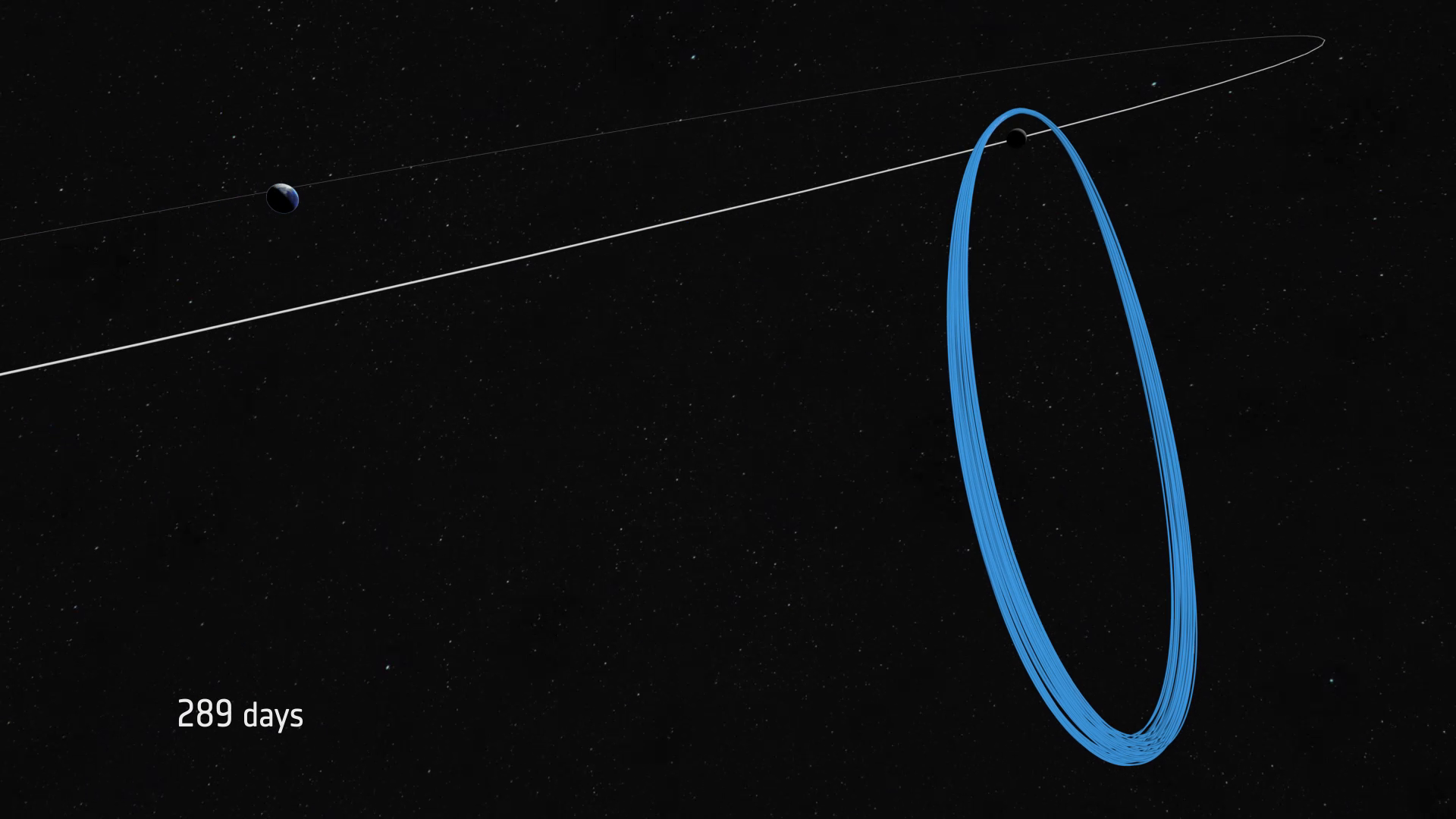
Access the video
The Gateway’s orbit will be a highly-elliptical six-and-a-half day journey, bringing it around 7000 km close to the Moon’s surface, but also up to 70 000 km away into deep space. The chosen orbit has the best of both worlds: when the Gateway is at the point in its orbit closest to the Moon, trips down to the lunar surface will be easier due to the shorter distance; but when the Gateway is farthest from the Moon, it will be easier to pick up astronauts and supplies from Earth. Additionally, less propellant is required to maintain the Gateway in this near rectilinear halo orbit than if the station was placed in a circular and closer orbit to the Moon. This orbit will also allow scientists to perform experiments in the deep space environment the station will traverse and will provide the Gateway with a continuous line of sight to Earth, meaning uninterrupted communication.
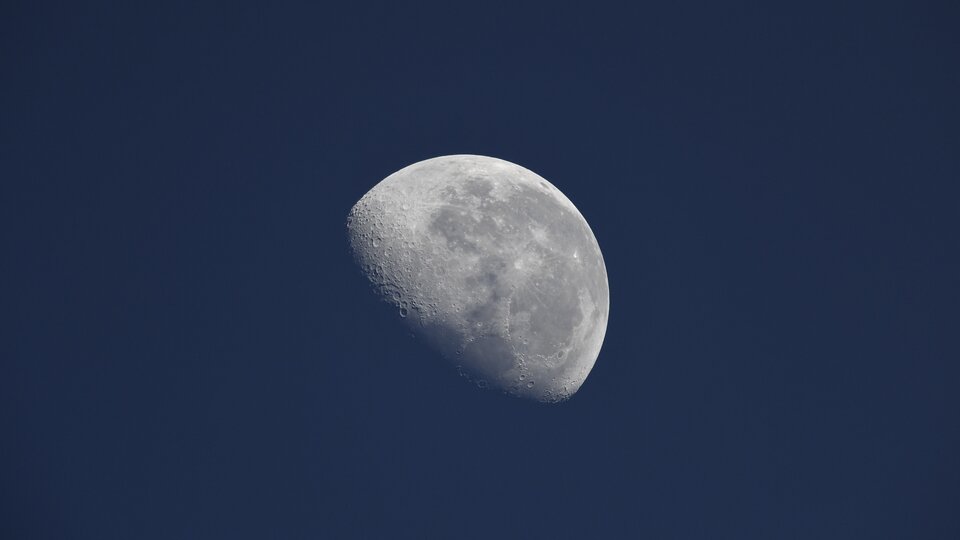
Gateway’s position around the Moon makes it a staging post for exploration. Escaping Earth’s gravity takes a huge amount of energy, as does landing on the Moon. Most rockets would not have the power to reach the Moon in one go, however they could reach the lunar Gateway, where astronauts can live and work on the station and take trips down to the lunar surface rather than journeying from Earth every time. The same concept applies for future human exploration endeavours beyond the Moon, for instance towards Mars, where supplies could be delivered to a Gateway for astronauts to collect and use for missions deeper into space, much like mountain expeditions can stock up refuges with food and equipment for climbs to the summit.
Construction
The Gateway will have a modular structure:
- ESA’s Lunar I-Hab, a module which will provide living space for astronauts, with an environmental control and life support system provided by the Japan Aerospace Exploration Agency (JAXA)
- ESA’s Lunar View, a module which will provide fuel, storage and the only windows on the station with a view of space and the Moon
- NASA’s Habitation and Logistics Outpost (HALO)
- ESA’s Lunar Link, a telecommunication element attached to NASA’s HALO module which will provide communication services between the Gateway and lunar assets on and around the Moon, such as rovers and satellites
- NASA’s Power and Propulsion Element (PPE)
- Canadarm3, the robotic arm provided by the Canadian Space Agency (CSA)
- Crew and equipment airlock provided by the Emirati space agency (MBRSC)
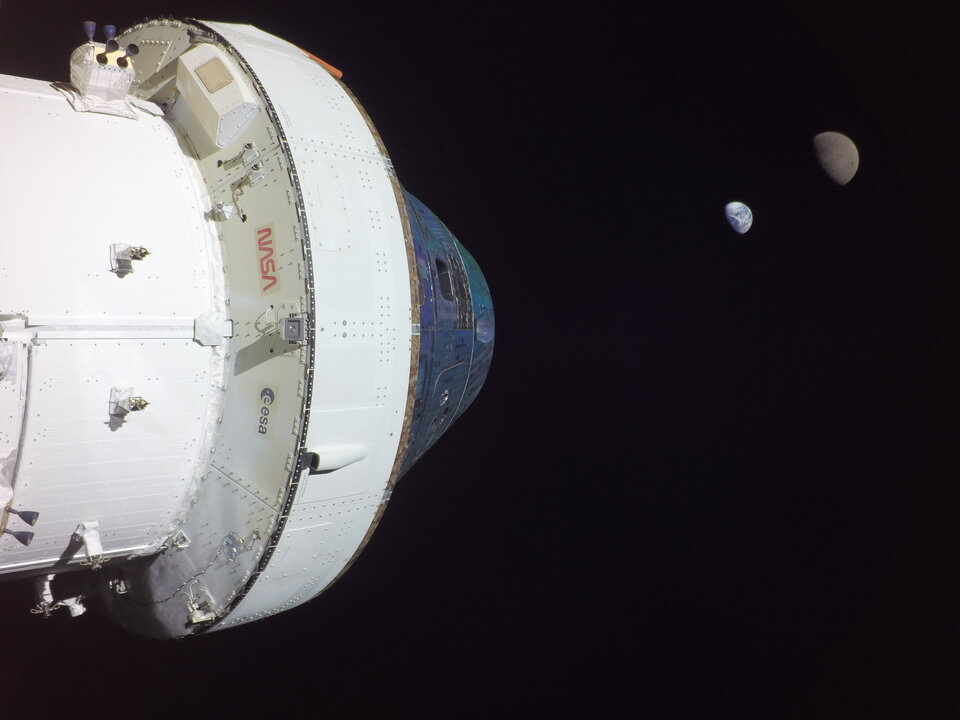
Visiting vehicles, such as the Orion spacecraft, deep space logistics modules and lunar landing systems, will dock to the Gateway via ports on Lunar I-Hab, Lunar View or NASA’s HALO.
The Gateway is being built in stages. NASA’s power module PPE and habitation module HALO will be the first elements to form the Gateway, bringing with them Lunar Link and two European radiation environment experiments. The outpost’s next modules, Lunar I-Hab and Lunar View, will arrive on the Artemis IV and Artemis V missions. They will be launched into space by NASA’s mega Moon rocket the Space Launch System, before being propelled in space by the Orion vehicle and its powerhouse, the European Service Module.


